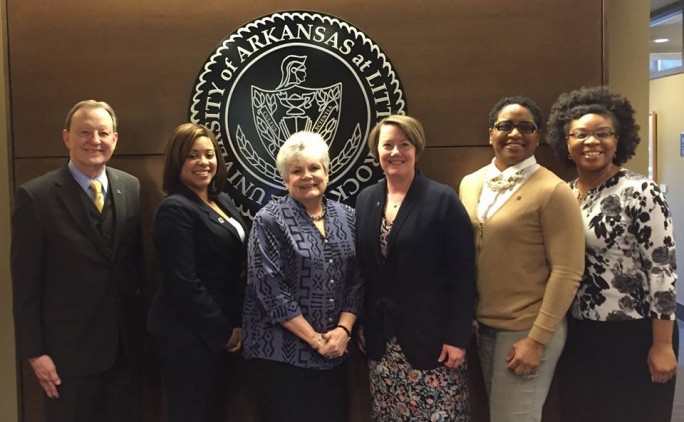UALR Campus Campaign kicks off
The academic year is winding down, but the time for supporting your university lasts all calendar-year long.
That’s the message of the UALR Campus Campaign Steering Committee, which encourages members of the campus community to make a gift to the university at any time throughout the year. The gift can be designated to a specific program or fund. Learn more about options to support the university at ualr.edu/giving/.
For 2015, the goal is an employee participation rate of 62 percent. Since participation is so important to having a successful campaign, this year’s theme is “Choose UALR: Your campus, your choice.”
Giving is even easier with online options that show the wide variety of programs donors may support. Whether giving to a department, a certain college, or a particular scholarship, faculty and staff are encouraged to support the area that matters most to them.
The 2015 campaign started Jan. 1 and concludes Dec. 31. Employees who are already contributing via payroll deduction are included in this year’s campaign.
Departments with a 100 percent employee participation rate in the campaign will receive Community Bakery cookies, effective now.
“It has actually always been the case that we consider contributions to the annual campaign from January to December, even though we usually don’t start ramping up efforts until the new academic year begins,” said Assistant Vice Chancellor for Student Life and Leadership Jan Austin, campaign steering committee chair.
No gift is too small and participation is the goal, according to Austin.
“Our gifts maintain services and develop and grow programs that support our students, our research, and our faculty and staff development, all year long,” she said.
Austin added that campus support demonstrates to alumni, friends, corporations, foundations and community partners that the university is worthy of their support, too.
When the Campus Campaign began in 2001, 6.5 percent of the campus participated; by 2013, participation rose to 50 percent of all benefits-eligible employees.
